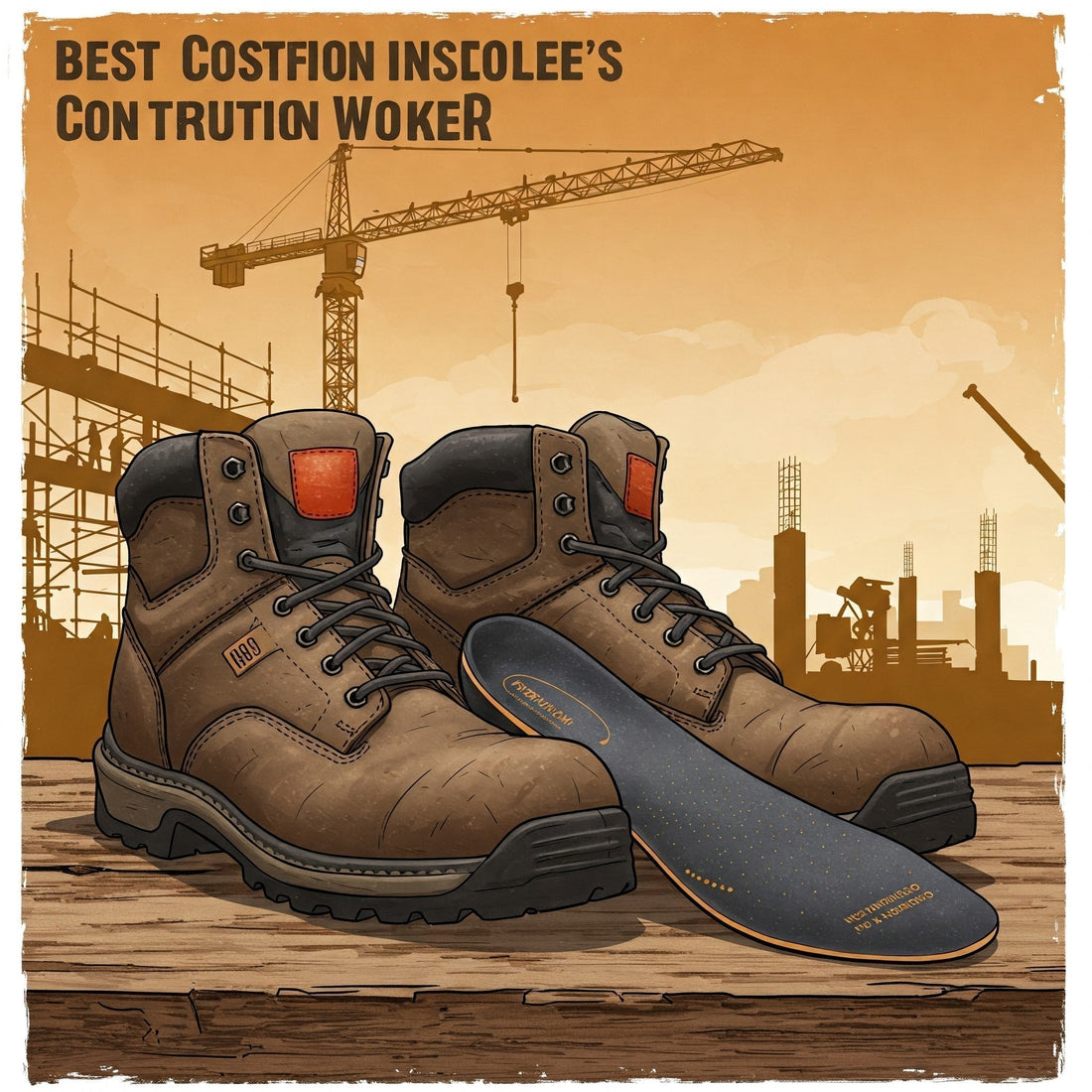
Beat the Grind: The Best Insoles for Construction & Tradespeople
Share
If you're in construction or the trades, you know your boots are essential tools. But let's be honest, those standard-issue insoles often feel like... well, nothing. Long hours on concrete, climbing ladders, carrying heavy loads – it all takes a serious toll on your feet, legs, and even your back. Foot fatigue, aching arches, heel pain (hello, plantar fasciitis!), and general discomfort aren't just annoying; they can impact your focus, safety, and long-term health.
Investing in a quality pair of insoles isn't a luxury; it's a necessity for staying comfortable, supported, and productive on the job site. But with so many options, how do you choose? This guide breaks down what to look for and highlights some top picks for keeping your feet happy through the toughest shifts.
Why Bother With Better Insoles?
Stock insoles in work boots are typically basic foam liners offering minimal cushioning and virtually no structural support. They're designed to meet a price point, not the demands of your job. Upgrading provides critical benefits:
- Shock Absorption: Reduces the impact of walking and standing on hard surfaces like concrete, protecting your joints from heel to back.
- Proper Support: Provides essential arch support tailored to your foot type (flat, neutral, high) and stabilizes your heel, improving alignment and reducing strain.
- Fatigue Reduction: By cushioning and supporting your feet correctly, good insoles help fight muscle fatigue in your feet and legs, keeping you energized longer.
- Pain Prevention & Relief: Can significantly help prevent or alleviate common issues like plantar fasciitis, heel spurs, arch pain, and general soreness.
- Enhanced Comfort: Simply makes your boots feel better, which makes a huge difference over a 10- or 12-hour day.
- Durability: Quality after-market insoles are built tougher than stock ones, lasting months instead of weeks.
What to Look For in a Work Boot Insole:
- Deep Heel Cup: Cradles and stabilizes the heel, providing a foundation for support and improving natural shock absorption.
- Structured Arch Support: Look for firm, not flimsy, support. It shouldn't collapse easily under pressure. Match the arch height (low, medium, high) to your foot type. Some insoles offer adaptive or moldable arches.
- Robust Cushioning: Materials like high-density foam (EVA, PU), gel, memory foam, or combinations are used. Pay attention to cushioning in the heel and forefoot (ball of foot). Anti-fatigue technologies often use specific patterns or materials (like Timberland's inverted cones).
- Durability: Construction work demands durability. Look for high-density materials and reinforced areas (like stabilizer caps). Expect to replace them every 6-12 months depending on use.
- Material & Thickness: Ensure the insole fits your boot without making it too tight. Many are trim-to-fit. Consider materials like Poron for durable cushioning or specialized foams (ETPU, LDPU) for premium comfort.
- Moisture-Wicking & Odor Control: A breathable top cover, often treated with an antimicrobial agent (like Polygiene), helps manage sweat and prevent stink – crucial for long days in boots.
Top Insole Picks for the Trades (2025):
Here are a few highly-regarded insoles known for handling the demands of construction and trade work:
- Timberland PRO Anti-Fatigue Technology Insoles:
-
- Best For: All-around anti-fatigue comfort.
- Why: Specifically designed for work boots. Features their unique inverted cone system for shock absorption and energy return. Offers good cushioning, dynamic arch support that adapts to different foot shapes, and an OrthoLite® top layer for comfort and odor control.
-
SprinSole Omni Custom Insoles:
- Best For: Maximum Shock Absorption & Heel Pain Relief.
- Why: These are thick insoles combining EVA, memory foam, and a rigid personalized TPU orthotic shell. They feature a deep heel cup and extra heel padding, focusing heavily on cushioning impact and providing stability, making them great for concrete floors and heel pain sufferers.
Making Your Choice
Consider your specific needs:
- Arch Type: Do you have flat, neutral, or high arches? Choose an insole designed to support your specific type.
- Primary Complaint: Is it general fatigue, heel pain, arch strain, or something else? Look for features addressing that issue.
- Boot Fit: How much room do you have in your boots? Choose thickness accordingly. Trim-to-fit options offer flexibility.
The Bottom Line
Your feet are your foundation on the job site. Don't neglect them! Swapping out those flimsy stock liners for a pair of high-quality, supportive insoles is one of the best investments you can make in your daily comfort, long-term health, and ability to perform your best work. Take the time to find the right pair – your feet (and back) will thank you.
